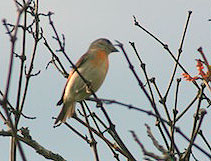Rupununi Trails: Eco Adventure Tours in the Guyana Shield


Rupununi Trails
Rupununi Trails adheres strictly to all guidelines of ethical, responsible and sustainable eco-tourism, and is a registered tour operator with the Guyana Tourism Authority (GTA).
We work closely with local Macuxi, Wapishana, Wai Wai and other Amerindian communities, ensuring that they benefit directly from eco-tourism by using their lodges, services and guides. By travelling in small groups together with local naturalists, we aim to encourage dialogue and friendship between our visitors and our guides. This close cooperation not only gives visitors the best chance to experience as much as possible, but also ensures that local populations recognize the benefits of preserving their natural world.
Moreover, Rupununi Trails organises its own environmental conservation programs and also works together with local communities and other environmental groups in the region.
South Rupununi Conservation Society
Our partner, the South Rupununi Conservation Society, was involved in the discovery of a new population of red siskin birds in the south of Guyana. The United States Government’s Environmental Protection Agency has since appointed SRCS as the lead agency to monitor the red siskin, and we congratulate both the EPA and the SRCS for taking this important first step. SRCS is now working on a management plan for this rare bird and its habitat. The members of SRCS are all drawn from Amerindian villages and local communities, thus ensuring that there is a high degree of respect and trust between conservationists and Amerindian village authorities. The SRCS is based in Dadanawa and currently works towards the protection of local species, including the giant river turtle and red siskin.
The Red Siskin
 The red siskin (carduelis cucullata), a rare bird of the fringillidae family, was found in Guyana in 2000 by a team from the Smithsonian Institute guided by the SRCS. Previously, the bird was known in the northwestern part of Venezuela and was greatly endangered by the cage bird trade. Since the surprising discovery, the SRCS has been running a project to establish a population estimate, distribution map and baseline data of the bird, its behaviour and habitat for academic research and conservation.
The red siskin (carduelis cucullata), a rare bird of the fringillidae family, was found in Guyana in 2000 by a team from the Smithsonian Institute guided by the SRCS. Previously, the bird was known in the northwestern part of Venezuela and was greatly endangered by the cage bird trade. Since the surprising discovery, the SRCS has been running a project to establish a population estimate, distribution map and baseline data of the bird, its behaviour and habitat for academic research and conservation.
Karanambo Ranch
This unique combination of working ranch and renowned resort is world famous for the Orphan Otter Program, established by Diane McTurk for the conservation of the threatened giant river otter. At Karanambu, orphaned otters are reared until they are suitably self-sufficient to be returned to the wild. The work of Diane and her staff has been critical to their survival in Guyana and the Amazon River basin. The area is also excellent for birding, fishing, and photographing black caiman. It is here that the greatest concentration of the endangered arapaima - the largest freshwater fish in the world - can be found.
Caiman House
Caiman House Field Station was established for the researching the black caiman, the largest species of the alligator family. The station functions as a hub for ongoing community projects, serving as the headquarters for the nonprofit Rupununi Learners, and has been responsible for the introduction of classroom libraries in each of the three Yupukari Village schools. It also hosts the Yupukari Public Library. Visitors include researchers, students and travelers; all of whom have the opportunity to observe data collection on the black caiman, and to meet local craftsmen, including the Yupukari Crafters, a nonprofit set up for furniture makers as a means of generating local jobs and income.
www.rupununilearners.gy/caiman_house/caiman_house.htm
The Greenheart Trust
The Greenheart Trust was established to protect and preserve Guyana's wildlife.
Checklists
Bird Checklist
> Download Excel file
Mammal Checklist
> Link to checklist
Reptile and Amphibian Checklist
> Link to checklist